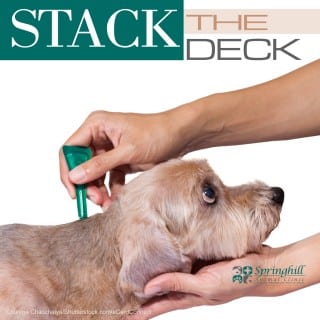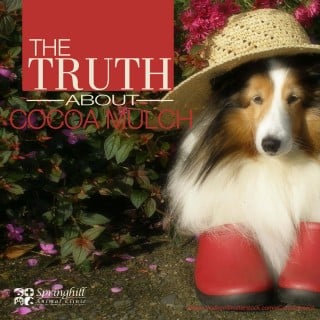WV Hunting Seasons/Laws – https://goo.gl/cfXpFD
PA Hunting Seasons/Laws – https://goo.gl/qVfSEV
Being outdoors during the fall gives a literal breath of fresh air to both ourselves and our pets. The cooler temperatures invite us to spend more time hiking and exploring familiar or unknown areas. However, this time of year means hunting season is in effect throughout much of the United States. By taking a few extra precautions, we, our pets, and hunters can all safely enjoy the great outdoors.
Know when it’s safe for you and your pet to go outside. Though most hunting seasons occur in the fall and winter, each state and quarry has its own timeline for hunting season. Our state’s hunting or wildlife agency will have information on when each season is in session. Also, know that wildlife areas may be authorized for hunters; the same goes for private land owners whose property runs parallel to public areas.
Introduce ‘blaze’ or ‘hunter’ orange to your furry friend’s wardrobe (and yours!). If you plan on being in or around wooded or hunting areas during the season, this color is a must. It is unrecognizable to animals, but is the standard color to hunters signaling you are not the prey they seek. Place a bell on your pet’s collar for added audible protection. Also, keep your pet on a leash during hunting season, even if you both know the area.
Regardless of the season, don’t let your pet chase deer or any other wild animal. In the same vein, don’t let your pet eat any animal carcass you may come across during a walk in hunting areas. Pets can not only become sick from ingesting them, they can transmit disease to your pet as well.
Above all, consider your pet’s fears before going outdoors during hunting season. Anxiety can occur from the sound of gunshots; if this is the case with your pet, keep her away from hunting areas. If you and your pet need time outdoors that extends beyond a daily walk, this might be a good time to seize the opportunity and explore urban parks with your pet instead.
If your dog is a hunting dog, also keep in mind these potential hazards:
– Cyanobacteria (blue-green algae) — These toxic algae often occur during hot, dry weather and give water a ‘pea soup’ appearance. It contains toxins that can harm neurological systems or the liver and cause immediate signs of poisoning with fatalities occurring both within minutes or several days. Provide fresh water to your dog when hunting as prevention is key to avoiding cyanobacteria.
– Lead shot or bullets — In addition to the trauma caused by gunshot wounds, lead poisoning may occur if the lead found in pellets and bullets is left in the dog’s body. Seek veterinary care immediately if your dog is shot.
– Clay pigeons — If ingested, especially as scattered broken pieces, clay pigeons can cause toxicity from the coal tar and heavy metals used to make them.
– Mushrooms — While the vast majority of mushrooms are non-toxic, the few toxic varieties are highly toxic. Since proper identification of mushrooms is difficult and usually only verifiable by experts, consider all mushrooms toxic until proven otherwise. In short, do not let your dog eat any mushrooms. (And don’t pick up any to snack on yourself!)
– Heat stroke — Everyone, especially your hunting dog, has a Christmas morning-like feeling on opening day of hunting season. That excitement coupled with still warm temperatures increases the risk of heat stroke for your dog. Take frequent water breaks and dips (in water free of blue-green algae), and when in doubt, take a few minutes to cool down.
Whether she is a seasoned bird dog or a house cat who stalks the bird feeder through the front window, keeping these safety tips in mind will ensure a safe and successful hunting season for you and your pet.



